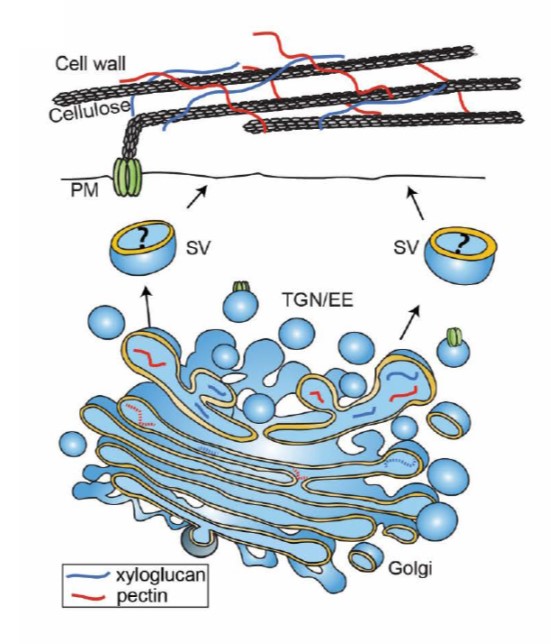
Glycomic analysis of plant endomembrane vesicles (Plant Cell)
Plant Science Research WeeklyEndomembrane vesicles carry not only secreted proteins but also carbohydrates for cell wall synthesis, yet relatively less is know about this latter process. Wilkop et al. describe a method to investigate the glycan contents of specific subsets of vesicles, to begin to understand how these cargos are…
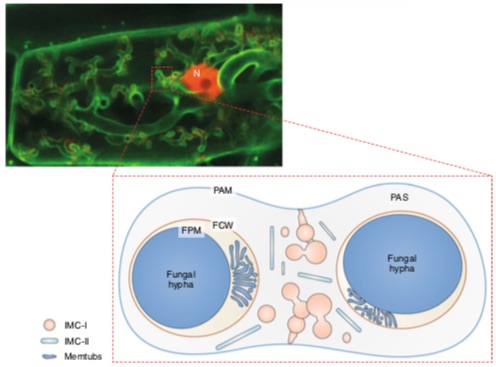
Membrane systems at the host-arbuscular mycorrhizal fungus interface (Nature Plants) ($)
Plant Science Research WeeklyIn the arbuscular mycorrhizal fungal interaction with plants, the fungal partner promotes nutrient acquisition in exchange for some sugar and fatty acids from host plants. This exchange occurs at the symbiotic interface in the plant cortical cells where fungal hyphae form special branched structure called…

Chloroplasts navigate towards the pathogen interface to counteract Phytophthora infection (bioRxiv)
Plant Science Research WeeklyChloroplasts have diverse roles in plant defense, including contributing to the production of defense compounds. Toufexi, Duggan et al. show new data indicating the dynamic relocation of chloroplasts to the contact point of the oomycete pathogen Phytophthora infestans. Infection also causes an increase…

Insights into the Trans-Golgi Network and Protein Secretion
Plant Physiology, Plant Physiology: On The InsideIn eukaryotic cells, the movement of cargo between single membrane-bound organelles such as the endoplasmic reticulum (ER), Golgi apparatus, trans-Golgi network (TGN), endosomes, lysosomes, and vacuoles is mediated by membrane trafficking. At the donor organelle, cargo molecules are loaded into transport…

A Golgi-released subpopulation of the trans-Golgi network mediates protein secretion in Arabidopsis ($)
Plant Science Research WeeklyThe plant trans-Golgi network (TGN) plays the role of early endosomes and acts as hub for the both secretory and vacuolar trafficking pathways. Two types of TGN, GA-TGN (Golgi-associated TGN) and GI-TGN (Golgi-released independent TGN), have been observed in plants. Here, Uemura et al. explore the cellular…
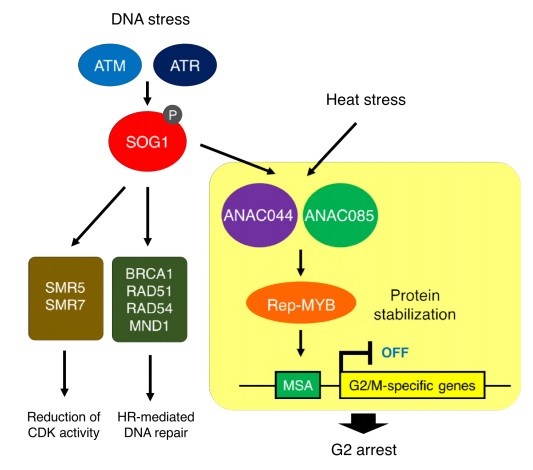
A regulatory module controlling stress-induced cell cycle arrest in Arabidopsis (bioRxiv)
Plant Science Research WeeklyProgression of the cell cycle central to growth, but during stress conditions plants arrest cell cycle progression to enable the organism to survive. SUPPRESSOR OF GAMMA RESPONSE 1 (SOG1), a plant-specific NAC-type transcription factor, regulates the expression of almost all genes induced by double-strand…
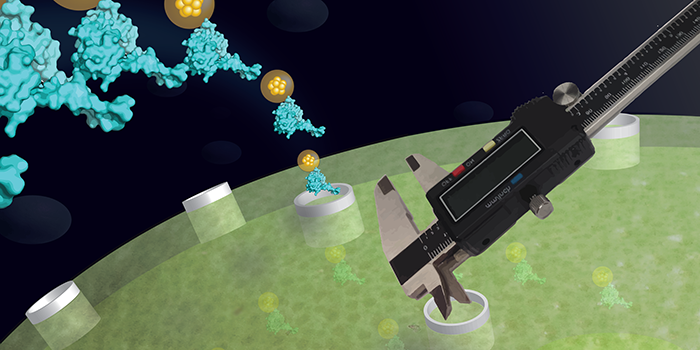
Chloroplasts can Import Folded Proteins
Research, The Plant Cell, The Plant Cell: In a NutshellGanesan et al. investigate protein import into chloroplasts The Plant Cell (2018).
By Iniyan Ganesan and Steven Theg
Background: Chloroplasts are the green compartment in plant cells that carry out photosynthesis. Most plant proteins are made in the cytoplasm and many need to cross different…

Programmed Cell Death in the Root Cap
Research, The Plant Cell, The Plant Cell: In a NutshellHuysmans et al. identify cell death regulatory proteins in root cap cells. Plant Cell https://doi.org/10.1105/tpc.18.00293
Background: Some plants, such as giant sequoia trees, can grow into the “Largest Living Things on Earth.” Ironically, most of a tree’s biomass is actually not alive but…
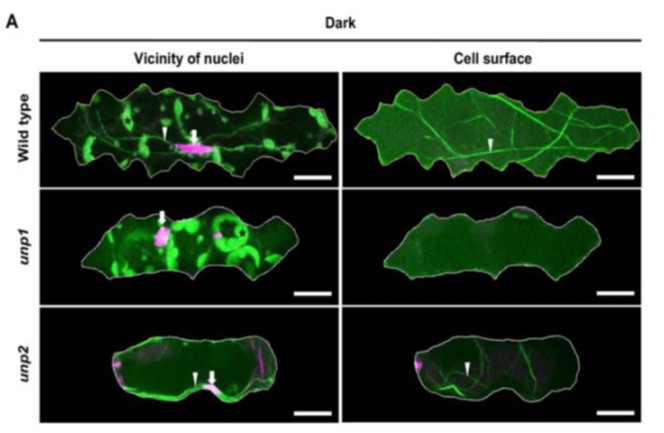
Dark-Induced Nuclear Positioning in Leaf Cells
Plant Physiology, Plant Physiology: On The InsideThe appropriate spatial arrangement of nuclei is essential for various cellular activities during cell division, growth, migration, and differentiation in eukaryotes. In plants, nuclear positioning is also required for proper responses to environmental stimuli, including pathogen infection, touch, temperature,…

